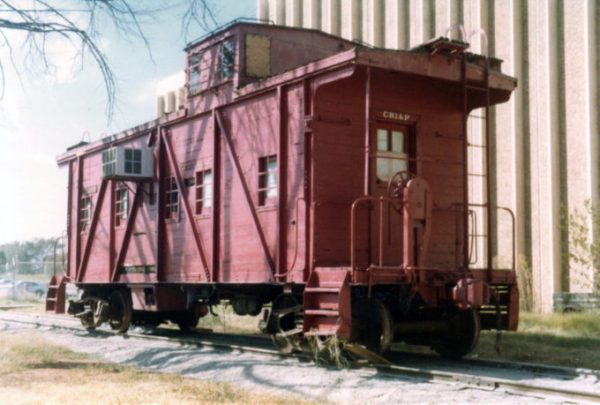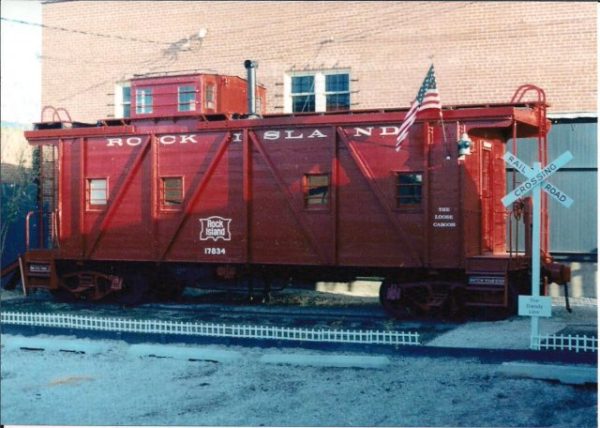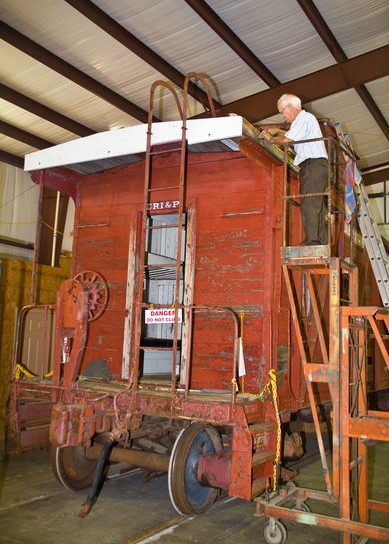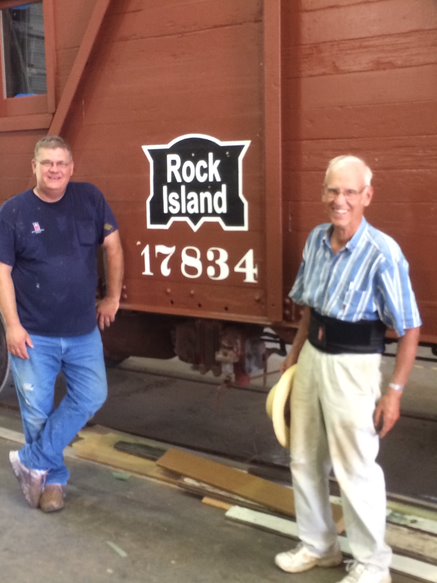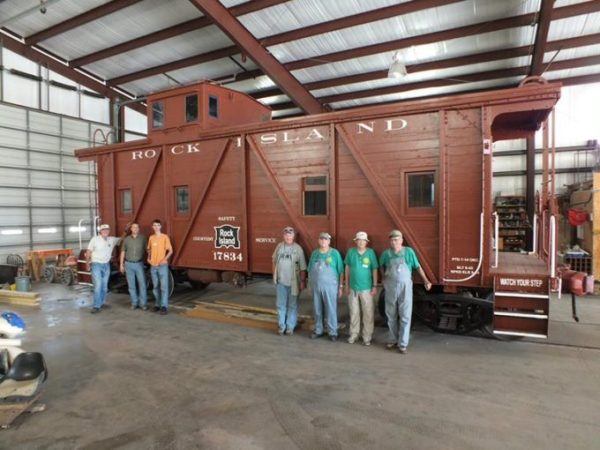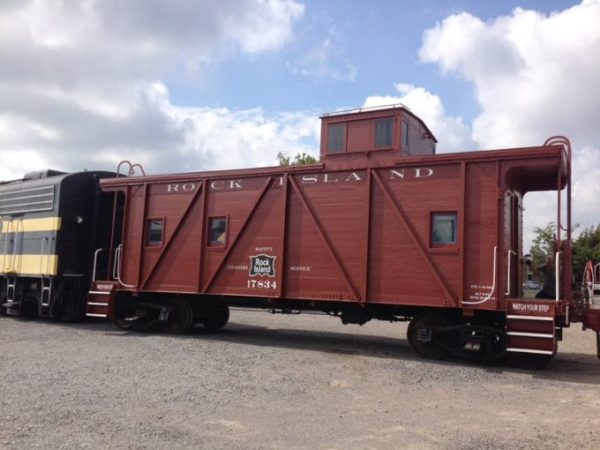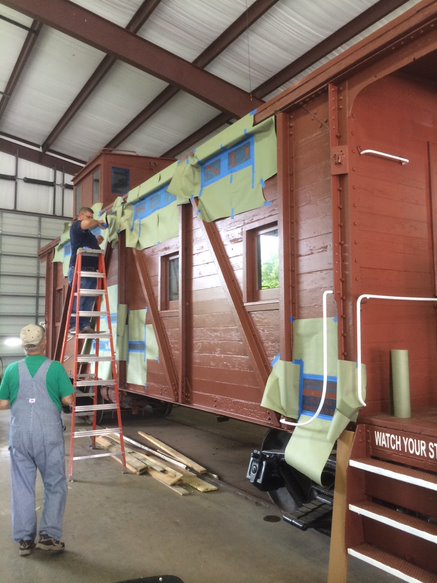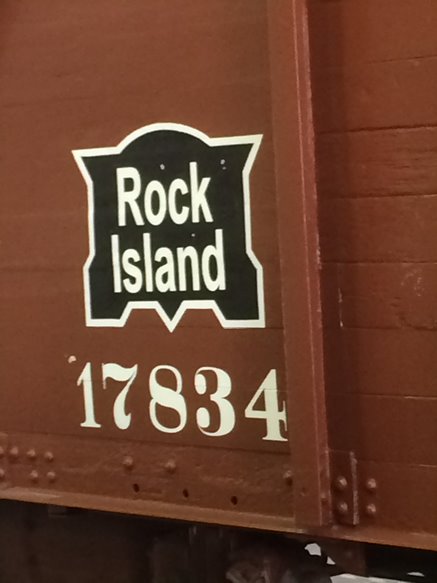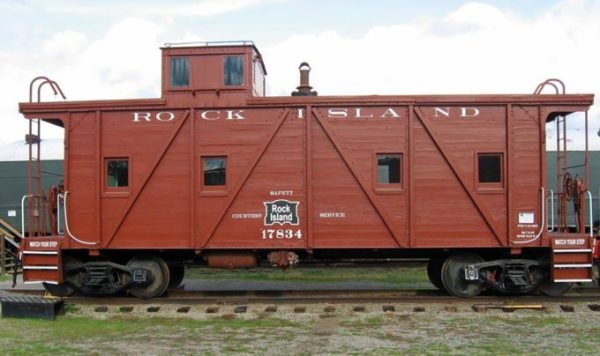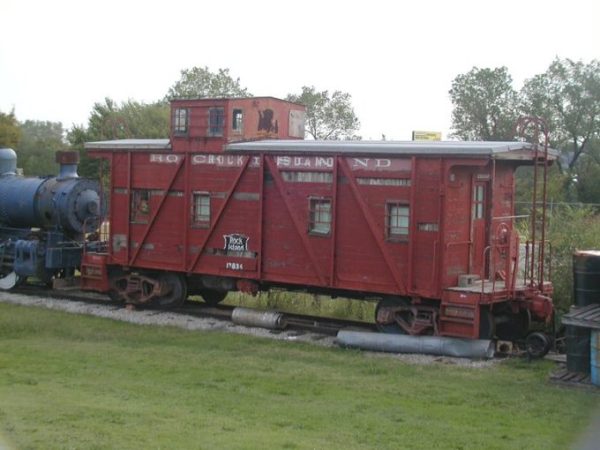Rock Island 17834 – Caboose
This unusual caboose was originally built as a 40-ton Class B-2 boxcar, probably by the Bettendorf Company of Iowa in 1915, as it rides on Bettendorf trucks and the steel underframes were cast in 1914. The boxcar was in service on the Chicago, Rock Island & Pacific Railroad for about thirty years.
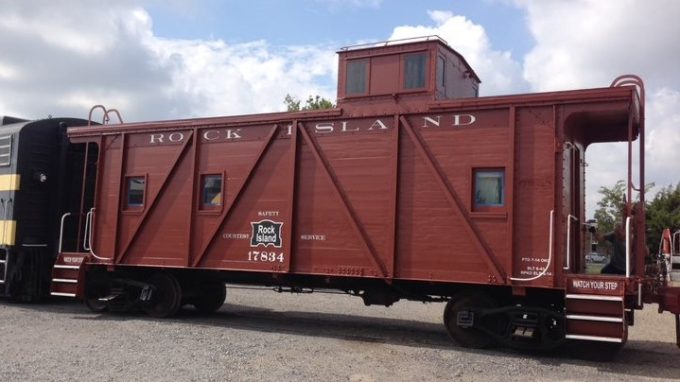
In the early 1940s the Rock Island needed more cabooses, so they modified about 200 Class B-2 boxcars in their shops in Illinois. Twenty of these boxcars were given a passenger seating section, baggage section with sliding doors, and a crew compartment with a cupola. One of these, No. 1772, is located at the Mid-Continent Railway Museum in Wisconsin. Many others, like our caboose, were modified for crew-only use as typical of a caboose. Our CRI&P 17834’s conversion most likely was carried out in 1943.
The center section of the car with the sliding doors was cut out and the remainder of the car spliced back together. Caboose end platforms were added to each end of the car, windows were cut into the walls, and a steel cupola was mounted on the roof. The interior was fitted with crew bunks, a toilet, a conductor’s desk, benches, a stove, and an icebox.
The car served into the 1970s, when cabooses were generally taken out of service all across the country. John Kilpatrick purchased CRI&P No. 17834 during this period, and parked it next to his lumber yard in OKC, where he used the caboose for meetings and parties.
In 1978, this caboose was donated by the Kilpatrick family to the Central Oklahoma Railfan Club, the predecessor organization to the Oklahoma Railway Museum. It was moved in 1978-1979 and put on display behind the Kirkpatrick Center, which later became part of the Omniplex, now the Science Museum of Oklahoma.
The caboose later went into storage as its condition deteriorated. Its restoration, started in 2010 and completed in 2017, was funded in part by the National Railway Historical Society with a Railway Heritage Grant. The roof and wooden sides were substantially rebuilt, and the interior was refinished. The toilet compartment was deemed irreparable and eventually replaced by a sink from a Frisco caboose. A stove, also from a Frisco caboose, was installed. The windows were replaced and electric lighting installed. The whole caboose was then beautifully repainted inside and out. Restoration was completed in 2017 and the caboose put on display.



